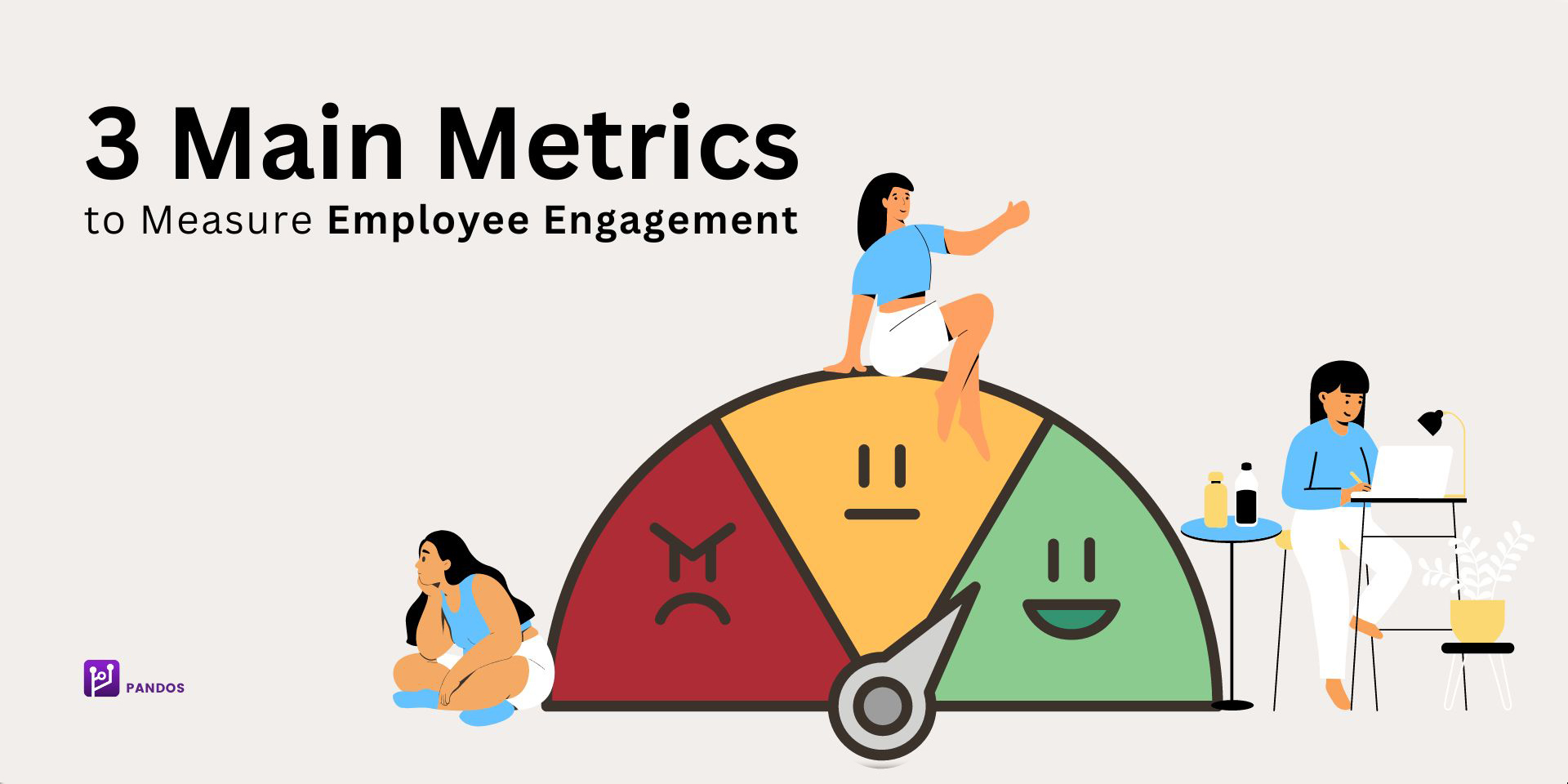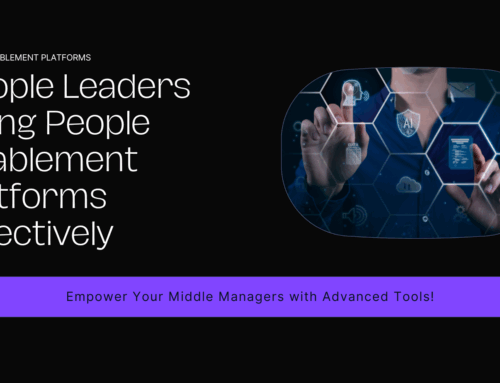“Employee engagement is the fuel that propels organizations forward, igniting innovation, collaboration, and exceptional performance.” – Richard Branson
Nowadays, businesses have realized that employee engagement is not just a nice-to-have but a key ingredient for success. It goes beyond superficial job satisfaction and delves into building a workplace where employees feel driven, connected, and committed about what they do.
To effectively measure and boost employee engagement, organizations use key metrics that give valuable insights to find out what’s working well and what needs improvement.
In this blog post, we will explore some of the key metrics of employee engagement and how they contribute to organizational success.
1. Employee Satisfaction Surveys:
Employee satisfaction surveys capture employees’ perceptions and feelings about their work, workplace, and the organization as a whole. They assess different factors such as job satisfaction, compensation, work-life balance, and opportunities for growth and development.
While many organizations create their own employee satisfaction surveys, tailored to their specific needs and organizational culture, there are several widely used and recognized employee satisfaction surveys. Here are a few examples of well-known employee satisfaction surveys:
Gallup Q12
The Gallup Q12 survey consists of 12 questions designed to assess various aspects of employee engagement that are believed to be crucial for a productive and thriving work environment. It measures employees emotional and psychological connection to their work and workplace, covering various aspects such as relationships with managers, opportunities for growth, recognition, and alignment with the organization’s mission.
Employee Net Promoter Score (eNPS)
The eNPS measures the likelihood of employees recommending their organization as a place to work. It provides insight into employees’ loyalty and engagement levels. By asking a simple question such as, “On a scale of 0-10, how likely are you to recommend this organization as a place to work?” and supplementing it with an open-ended follow-up question, organizations can gauge the overall sentiment and identify areas for improvement.
Great Place to Work (GPTW) Trust Index
The Great Place to Work Trust Index survey is a comprehensive tool that assesses employee perceptions of trust, credibility, respect, fairness, and camaraderie within the organization. It provides insights into the overall workplace culture, employee experience, and levels of engagement.
It’s worth mentioning that though these surveys are well-known and widely used, the choice of survey may vary depending on the organization’s specific needs and preferences.
2. Employee Performance Metrics:
Engaged employees tend to be more productive, produce higher-quality work, and consistently meet, or even exceed, performance expectations. Organizations can analyze metrics such as sales numbers, customer satisfaction ratings, absenteeism and turnover Rates, and project completion rates as signs indicating employee engagement.
Besides these metrics, there are several well-known employee performance evaluation methods that are commonly utilized to assess and measure the performance and contributions of the employees. Here are a few examples:
Management by Objectives (MBO)
Management by Objectives is a performance evaluation method that emphasizes setting specific, measurable, achievable, relevant, and time-bound (SMART) goals for employees. This approach involves a collaborative goal-setting process between managers and employees. Then, progress is monitored and performance is evaluated based on the achievement of these objectives. The last step is rewarding the team for their achievements.
Key Performance Indicators (KPIs)
Key Performance Indicators are specific metrics and targets that are established to evaluate employee performance. These metrics align with the organization’s strategic objectives and measure performance in critical areas such as sales, customer satisfaction, productivity, quality, or efficiency. Regular tracking and assessment of KPIs enable organizations to gauge employee performance objectively and identify areas for improvement.
Behaviorally Anchored Rating Scales (BARS)
Behaviorally Anchored Rating Scales utilize a rating system that links specific behaviors and performance indicators to predetermined performance levels. This approach provides a more detailed and structured evaluation by using behavioral descriptors that align with performance expectations. BARS help ensure consistency and fairness in performance evaluations by anchoring ratings to observable behaviors.
Self-Assessment
Self-assessment is a performance evaluation method where employees evaluate their own performance against predetermined criteria or objectives. This process encourages employees to reflect on their strengths, areas for improvement, and achievements. Self-assessments can be used in conjunction with other evaluation methods to provide a well-rounded perspective on individual performance.
It’s important to note that organizations may adopt a combination of these methods or customize them based on their unique requirements and organizational culture. The selection of a performance evaluation method depends on factors such as the organization’s goals, desired level of objectivity, and the nature of the job roles and responsibilities.
3. Employee Feedback and Recognition
Regular feedback and recognition play a vital role in fostering engagement. Metrics related to employee feedback and recognition provide a glimpse into the effectiveness of communication channels, managerial practices, and the overall culture of appreciation. Monitoring metrics such as the frequency and quality of feedback, the utilization of recognition programs, and the implementation of employee suggestions allows organizations to gauge the level of engagement and take corrective actions if needed.
360-Degree Feedback
360-degree feedback is a comprehensive performance evaluation method that involves gathering feedback from multiple sources, including supervisors, peers, subordinates, and even customers. This holistic approach provides a well-rounded assessment of an employee’s strengths, areas for improvement, and overall performance. It promotes a more comprehensive understanding of an individual’s contributions and fosters a culture of feedback and development.
Pulse Survey
Unlike traditional surveys that are conducted annually or semi-annually, pulse surveys are typically shorter and more frequent, allowing organizations to stay updated on employee or customer sentiment and identify trends or areas of concern in a timely manner. It enables employees to provide feedback on a regular basis, giving them a voice and an opportunity to share their thoughts, concerns, and suggestions.
Track and Boost Employee Engagement with Pandos
1. Individual and Team Profiles:
Individual and team profiles help members and teams build their identity and recognize others’, which creates a sense of belonging. Profiles also contain useful information about members that helps them match perfectly (based on work style, availability, skillsets or any other custom criteria) for their collaborations.
2. OKRs and Tasks Management System:
With Pandos, everyone clearly knows what is expected of them and they can easily delegate tasks to teammates or break their tasks to smaller steps and report them accordingly.
3. Gamification and Badging:
Additionally, Pandos offers gamification features such as badges which incentivize users to work harder towards goals by recognizing tangible milestones achieved along the way. These rewards also help foster healthy competition among team members- further fueling productivity levels within an organization.
4. Peer Assessment and Puls Surveys:
Pandos also enables peer assessment tools allowing colleagues to evaluate one another’s efforts collaboratively. This type of approach not only helps identify any skills gaps but fosters a sense of community between colleagues who may not have otherwise interacted much before.
5. Dashboard and Performance Review:
This tool enables team managers or HR departments to oversee the progress set up regular check-ins with employees where they can provide feedback on their work performance, identify areas for improvement, and offer recognition for achievements.
We believe Pandos’ combination of innovative functionalities allows businesses/companies small & large alike greater control over measuring success metrics while promoting better communication channels between management-level staff down below (or vice versa) ultimately leading towards happier/more engaged employees at all levels within an organization!



